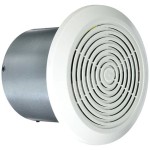Best Tile for a Small Bathroom
Choosing the right tile can dramatically transform a small bathroom, creating an illusion of spaciousness and enhancing its aesthetic appeal. Careful consideration of tile size, color, pattern, and material is crucial for achieving the desired effect. This article explores the best tile options for maximizing space and style in a small bathroom.
1. Utilizing Large Format Tiles
Contrary to popular belief, large format tiles can make a small bathroom appear larger. Fewer grout lines create a seamless, continuous surface, minimizing visual clutter and expanding the perceived area. Large tiles also contribute to a more modern and streamlined look. While they might require more precise cutting and installation, the resulting aesthetic impact is well worth the effort. Choosing rectified tiles, which have precisely ground edges for minimal grout lines, enhances this effect further.
When selecting large format tiles, consider the overall dimensions of the bathroom. Excessively large tiles in a very small space might appear disproportionate. A good rule of thumb is to choose a tile size that allows for a minimal number of cuts, reducing waste and creating a more cohesive visual. Additionally, large format tiles can be used on both floors and walls to create a unified and expansive feel.
2. Strategic Use of Light Colors
Light-colored tiles reflect light, making a small bathroom feel brighter and more open. White, cream, light gray, and soft pastels are excellent choices for walls and floors. These colors create a sense of airiness and contribute to a calming atmosphere. Light-colored tiles also provide a versatile backdrop for various design styles and accent colors.
While pure white can sometimes feel sterile, incorporating subtle variations in tone or texture can add depth and interest. Consider using textured tiles, such as those with a subtle wave pattern or a matte finish, to add dimension without overwhelming the space. Furthermore, incorporating light grout colors minimizes contrast and enhances the seamless look of larger tiles.
3. Exploring Tile Shape and Pattern
While large format square and rectangular tiles are popular choices, other tile shapes and patterns can also be effectively utilized in small bathrooms. Long, narrow tiles, such as subway tiles laid vertically, can draw the eye upwards, creating an illusion of height. Hexagonal or mosaic tiles can add a touch of personality and visual interest without overwhelming the space.
When using patterned tiles, consider the scale and complexity of the design. Large, bold patterns might overwhelm a small bathroom, while smaller, more subtle patterns can add visual interest without making the space feel cramped. Using patterned tiles as an accent, such as in a shower niche or on a feature wall, can add a pop of personality without overwhelming the overall design.
4. Considering Tile Material
The choice of tile material impacts both the aesthetics and functionality of the bathroom. Porcelain and ceramic tiles are popular choices due to their durability, water resistance, and ease of maintenance. Glass tiles offer a unique, reflective quality that can enhance the sense of light and space. Natural stone tiles, such as marble or travertine, can add a touch of luxury but require more maintenance and sealing to prevent water damage.
When selecting tile material, consider the specific needs and conditions of the bathroom. For areas with high moisture exposure, such as showers and floors, porcelain or ceramic tiles are generally recommended. Glass tiles can be used as accents or in areas with less direct water contact. Natural stone tiles require careful consideration of their porosity and maintenance requirements.
5. Maximizing Natural Light
Natural light plays a crucial role in enhancing the perception of space in a small bathroom. Whenever possible, maximizing natural light sources, such as windows, can significantly impact the overall feel of the room. Light-colored window treatments and mirrors can further enhance the effect of natural light, reflecting it around the space and creating a brighter, more open atmosphere.
In bathrooms with limited natural light, strategically placed artificial lighting can be employed to mimic natural light and create a more welcoming environment. Consider using a combination of ambient, task, and accent lighting to create a layered and functional lighting scheme. Light-colored tiles, especially those with a glossy finish, can effectively reflect artificial light, further enhancing the brightness of the space.

The Best Of Bathroom Tile Ideas For Small Bathrooms Westside

9 Tips To Select The Best Bathroom Wall Tiles For Your Home

The Best Of Bathroom Tile Ideas For Small Bathrooms Westside

15 Best Bathroom Tiles Designs That Make You Go Wow Livspace

15 Best Bathroom Tiles Designs That Make You Go Wow Livspace

Small Bathroom Shower Tile Ideas 2025

Small Spaces Can Be Glam Too

How To Select And Maintain The Bathroom Tiles For An Elegant

The Best Tile Color For A Small Bathroom Nordroom

30 Inspiring Small Bathroom Designs To Maximize Space And Style







